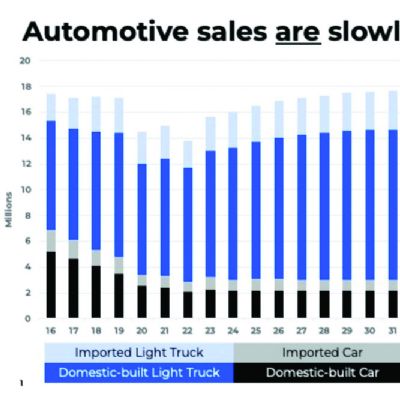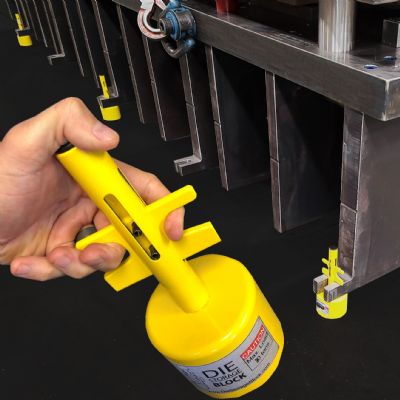Progressive-Die Carriers
July 1, 2016Comments
With all material running through progressive stamping dies we find the carrier—the material that connects, holds and transports the stampings from station to station as they move sequentially through the die. Also known as webs, strips, ties and attachments, the types of carriers and their shapes vary based on product geometry, material thickness and strength, material flow during deformation, part stability in the die-tip position, lifting distance, and press speed. The carrier-strip profile may be straight, zig-zagged or looped, depending on the optimum location of the attachment points on the part, and the clearance required in the die.
Tool and die design engineers select among several types of carriers:
- Center carriers, created by cutting a periphery around the part that leaves a strip of material near the center of the part. A narrow strip allows the die to perform forming and other work all around the part, while a wide strip allows work to be performed along the outside of the part.
- Inboard carriers, attached to the part somewhere between the center and the outside of the part. This type of carrier stays within the stock width, avoiding the need for extra material to create the carrier.
- Lance carriers, created by lancing the coil stock rather than trimming material away. Lancing eliminates scrap material between parts but tends to leave shavings in the die—this problem can outweigh the benefit of reduced scrap.
- Outside carriers, generally attached to the sides of a stamped part to allow work to be performed on or around the center of the strip. Outside carriers make it easier to carry the strip on outside lifter rails, and also provide good balance to push-feed the strip through the die. Outside carries are created by trimming, lancing, or by punching dog-bone shapes for drawing.
- One-sided carriers, which attach to the stamped part on one side only. This allows work to be performed on three sides of the part. However, one-sided carriers may allow the strip to veer off to one side of the die, creating problems with part location in the die stations.
- Solid carriers, which find use when there is no material movement expected during the stamping process. The coil stock remains solid until the cutoff or blanking station generates the final periphery.
Design Considerations
Try to design carriers within the stock width and pitch required for the blank. Otherwise, additional material must be allocated for the coil-stock width or the progression to accommodate the carrier. Strive for a minimum carrier width not less that two times the material thickness to help ensure good cutting. Typical carrier width may be 1⁄8 to 1⁄4 in. for medium-sized dies requiring carriers that must flex, while larger dies may require wider carriers in order to push the coil stock through the die.









